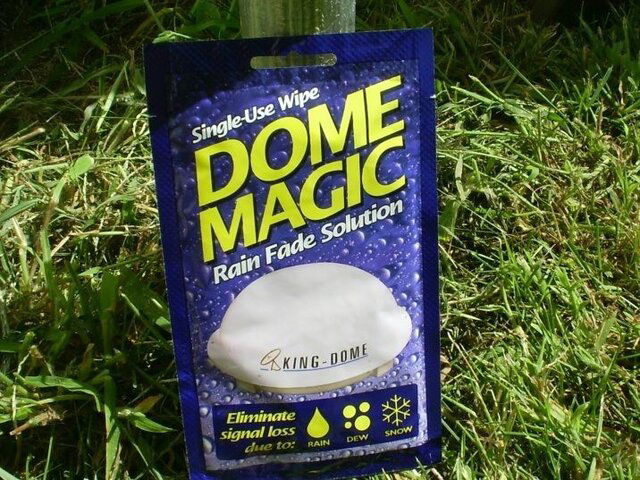Add one more endorsement ......
A year and a half ago I was a non-believer and thought that Rain Shield was a joke. Then .... at the 2005 Satellite Expo I saw a demonstartion. I am totally amazed by the advantages of this product!
Water streaming across the face of a reflector is not a major issue, but water streaming across the LNBF cap is! Simply applying the Rain Shield to the LNBF lens then streamig water across brought a 90% dry signal from below threshold 50% signal on Dish Network signal to a 75% locking signal. While water streaming on the reflector seemed to only affect the signal less than 10%.
The major demonstration of abilities of Rain Shield is on a mobile dome satellite system. These systems are known for loss of signal in any medium downpour as the streaming water on the dome surface reflects the signal and does not allow adequate signal to pass through the dome. Application of Rain Shield almost eliminates this problem. Demonstrations showed that the signal on a dome without Rain Shield dropped from a 85% to 30%, but with Rain Shield the signal dropped to 70%.
Of course a larger reflector will maximize the gain resulting in reduced outages caused by signal attenuation, but reducing the amount of standing water on the LNBF cannot be addressed by the dish size.
A year and a half ago I was a non-believer and thought that Rain Shield was a joke. Then .... at the 2005 Satellite Expo I saw a demonstartion. I am totally amazed by the advantages of this product!
Water streaming across the face of a reflector is not a major issue, but water streaming across the LNBF cap is! Simply applying the Rain Shield to the LNBF lens then streamig water across brought a 90% dry signal from below threshold 50% signal on Dish Network signal to a 75% locking signal. While water streaming on the reflector seemed to only affect the signal less than 10%.
The major demonstration of abilities of Rain Shield is on a mobile dome satellite system. These systems are known for loss of signal in any medium downpour as the streaming water on the dome surface reflects the signal and does not allow adequate signal to pass through the dome. Application of Rain Shield almost eliminates this problem. Demonstrations showed that the signal on a dome without Rain Shield dropped from a 85% to 30%, but with Rain Shield the signal dropped to 70%.
Of course a larger reflector will maximize the gain resulting in reduced outages caused by signal attenuation, but reducing the amount of standing water on the LNBF cannot be addressed by the dish size.




